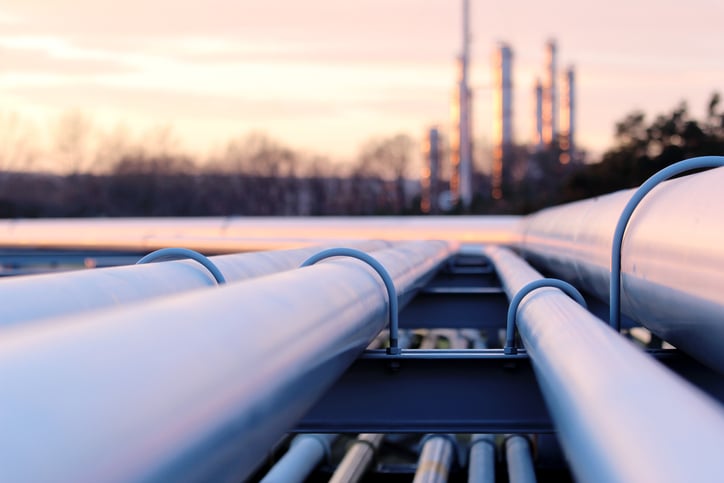
Metal has a dangerous reputation. Most people see its sturdy structure and assume it’s nearly invincible. Unfortunately, metal-to-metal contact can severely corrode metal piping systems, which can turn into ruined pipes, destruction, and even fatal catastrophes.
However, if you’re using a metal piping system, there are ways to prevent the dangers of metal-on-metal contact. We’ve put together a guide to maintaining safer metal piping systems. Here’s how to reduce metal-on-metal contact and strengthen your systems.
Metals Used in Piping Systems
In order to know the magnitude of the risk your networks are facing, it helps to have an overview of metals that are usually found in piping systems. Here’s a quick overview:
Carbon Steel
Carbon steel is a metal that combines carbon and iron. It’s relatively sturdy and inexpensive. However, it’s also vulnerable to corrosion and rusting.
Alloy Steel
Alloy steel is a broader category of metal pipe material. It includes metal that combines elements such as nickel, molybdenum, manganese, copper, chromium, and silver. Using different combinations of these elements can help pipes hold up better in harsh temperatures or environments.
Stainless Steel
Stainless steel is known for its shiny appearance and ability to shrug off corrosion. Its look makes it popular for highly visible piping, but it tends to lack the strength of other metals, especially when it isn’t heat-treated.
Why Dissimilar Metals Come in Contact
Metal-on-metal contact happens in a range of circumstances. It usually happens as a result of unrestrained pipes, where metal pipes are left sitting on beams, supports, or other pipes. In other cases, pipes are sometimes paired with fittings that are made of dissimilar metals. Either way, when metals rub on one another, it can cause galvanic corrosion, thermal expansion, or destructive friction.
How to Stop Metal-to-Metal Contact
Luckily, there are ways to avoid metal-on-metal contact and lengthen the lifespan of your piping systems. They include adding pipe supports as well as making adjustments to the way your current systems work. Here’s how to avoid the destructive consequences of metal-on-metal contact:
Isolate Piping
By adding isolators to your pipes, you can lay down a physical buffer between metal piping and surrounding metals. Some common examples of isolators are wear pads, flat plates, and slide plates. These supports give metal piping a layer that absorbs friction caused by the exposed metal of surrounding beams.
Pipe shoes are another solid example of metal-on-metal reducers that isolate piping. Pipe shoes are often made of composite material, which means they add an extremely durable, nonmetallic support between metallic piping and beams.
Pipe shoes’ composition doesn’t just fight off the problem of friction or dissimilar metal corrosion. It also limits thermal transfer, which means extremely cold piping systems, like those in cryogenic systems, will be less likely to gather ice or suffer heat damage.
Elevate Piping
Elevating piping is another way to keep metal pipes from rubbing against other metal surfaces. You can accomplish this with pipe shoes, but other supports can also tackle the task of lifting piping.
Pipe restraints are designed to lift up piping and hold it in place. They can also limit the damage of metal-on-metal contact by redirecting movement. In some instances, an improperly installed restraint will cause point loading, where a restraint pins down a pipe without letting it move at all. Point loading can trap vibrations and drive them into a single point. A strategically installed pipe restraint will encourage axial movement, spreading vibrations across the surface in a more natural, less damaging way.
Protect Existing Pipe Supports
Even if your system already includes pipe supports, there are ways to protect them against metal-on-metal contact. For instance, your heavy-duty pipe restraints, such as hold-down clamps, should include liners to keep pipes from scraping against the metal of the clamp. Liners add insulation to piping and absorb vibrations.
Additionally, if you’re using smaller, unlined restraints such as U-bolts, you can protect against metal-on-metal damage by adding thermoplastic coatings. You can also reinforce metal surfaces through galvanization and finishes. Here are two types of zinc finishing methods to consider:
Zinc Plating
Zinc plating is a finishing method in which a layer of zinc is added to the metal’s surface. Zinc is added in a thin layer, which makes it an ideal option for indoor restraints.
Hot-Dip Galvanization
Hot-dip galvanization is another way to add zinc to reinforce metal. However, this process adds a deeper coating than zinc plating, which makes it a good option for protecting core metals against outside metals, corrosive environments, high humidity, and salty air.
Reduce Metal-on-Metal Contact with Quality Products
Reducing the damage of metal-on-metal contact can strengthen pipes and your whole process system. Want to learn more about which products work best for your piping network? Explore our piping products here.






